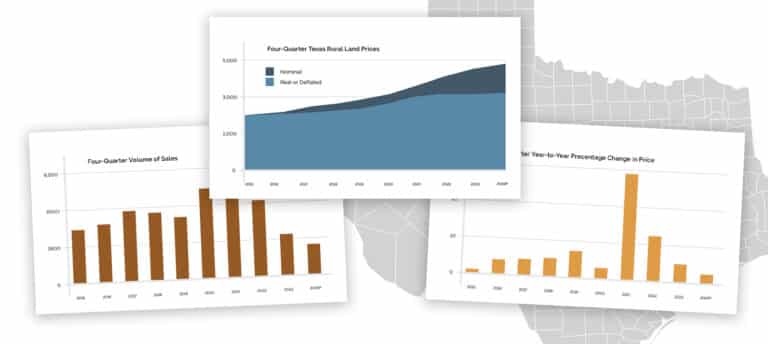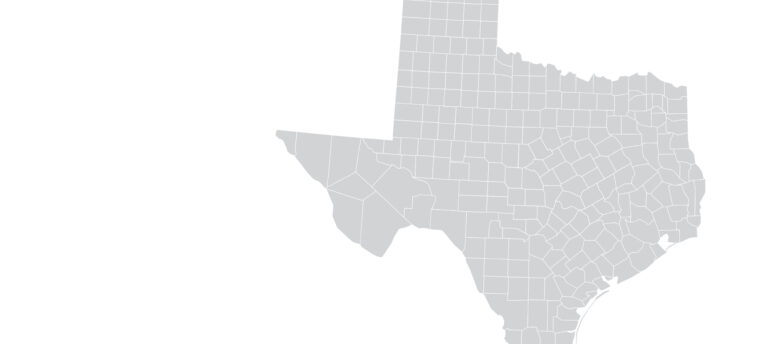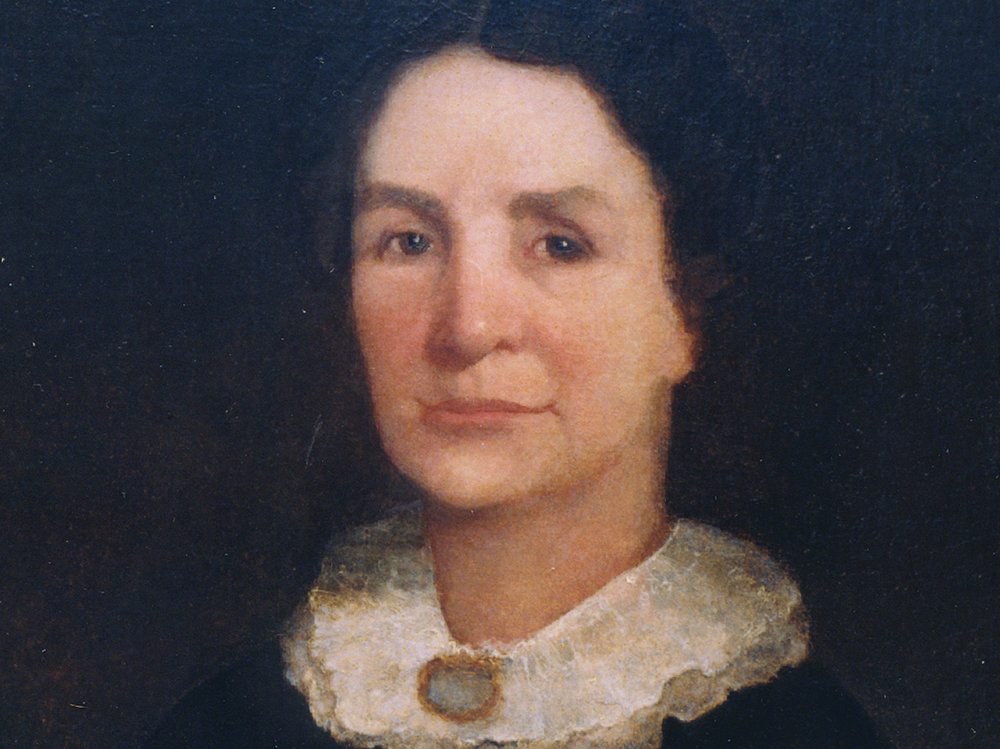
Most Texans know her name. She’s the “Mother of Texas.” Unfortunately, that’s usually all they know about Jane Long. Aside from an obligatory paragraph in almost every school history book, few Texans realize Jane Long was a Texas Revolution hero who not only assisted the likes of Sam Houston, Stephen F. Austin, William Barrett Travis and Mirabeau B. Lamar, she was courted by many of them!
“She was one of the most politically powerful women in Texas in the early 1800s, a time when women were supposed to give birth and do little else. That is the truly amazing thing about Jane Long,“ explains Helen Mooty of the Galveston County Historical Commission.
Pioneer Woman brave and true, yes, Jane Long was a lady who did what she had to do
— “The Ballad of Jane Long” Original score by Bruce Haire, Lyrics by Linda C. Elissalde
Jane Herbert Wilkinson Long was a 22-year-old Mississippi heiress who, in 1819, followed her husband James Long to the new and often treacherous land known as Spanish Texas. James was a filibuster, a leader of soldiers who arrived in then contested territory to help unhappy settlers declare their right to independence.
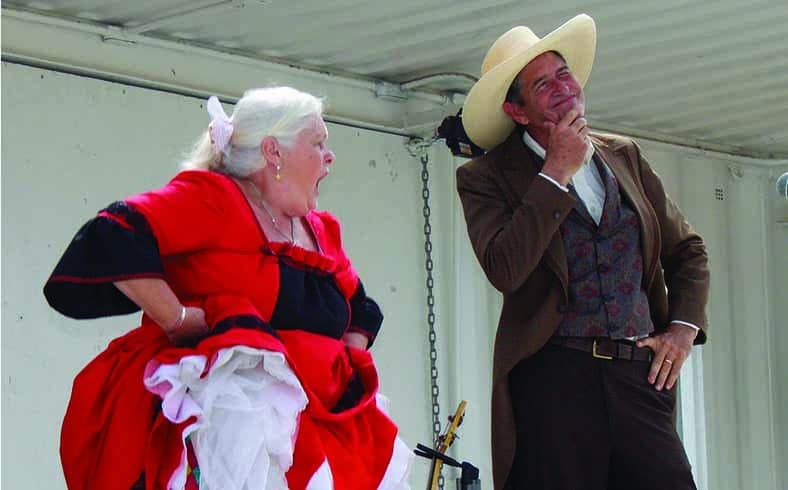
Determined to establish a Republic of Texas, James and the majority of his troops left Jane in September 1821, on Bolivar Peninsula, just a few miles east across a narrow water stretch from Galveston Island. The famous pirate, Jean Laffite, had only a short time, previously been headquartered in his Campeche compound on the isle’s eastern end. Karankawa Indians (supposedly cannibalistic) held sway on Galveston’s western end.
James assured Jane he would return, to stay put. Neither realized the coming winter would be the worst on record to that date. Nor did they realize Long’s remaining soldiers would desert, leaving Jane, then pregnant, the only adult with two very young girls on that otherwise uninhabited peninsula.
Most of what we actually know about Jane comes from Mirabeau B. Lamar (later to become President of the new Republic) and his numerous interviews with her. These, plus anecdotal sources, tell us:
- Jane was actually threatened by the Karankawa Indians who tried to sail across the narrow channel separating Galveston’s tip from Bolivar. Some historians say Jane used her red petticoat as a flag and uniforms left by the deserters to trick the Karankawas into thinking her Bolivar compound was still occupied by some of her husband’s soldiers.
- During that horrendous winter, Jane gave birth to her second daughter, with only the other two children in attendance, prompting the “Mother of Texas” accolade.
- Jane refused to leave Bolivar—all because she promised James she’d be there when he got back.
- Jane was the one who dined (sans husband) with the pirate Laffite in an attempt to entice him to finance Long’s obsession. Laffite entertained her royally, but refused her request.
- Jane designed a flag featuring what she called “the lone star” for her husband to carry—perhaps the first Texas “lone star” flag. She said the “lone star” referred to her husband.
- Jane finally left Bolivar Peninsula when word came James had been captured, taken to Mexico and shot.
- To assist Stephen F. Austin, Jane entertained Mexican officials, representatives of Spain, at the Brazoria-area hotel she operated. Some say she hid the Texas fighters’ arms in her barn.
- Jane organized a ball at her hotel when Stephen F. Austin was freed from a Mexican prison. At this ball, Austin gave his first speech calling for Texas Independence from Mexico, setting off the Texas Revolution.
- Some say the Texas revolutionaries would sneak away from Jane’s soirées for Mexican officials, change into disreputable clothing and steal the Mexicans’ guns and ammo, which they also hid in Jane’s barns. Then they’d change back into their fancy duds and return to Jane’s parties.
- We know that during the famous “Runaway Scape,” Jane left Brazoria and fled back to Bolivar just ahead of the Mexican Army. She took with her the papers of Mirabeau B. Lamar (later the second President of the Republic of Texas), including his original history of Texas
- Jane also saved personal effects of other notable Texas fighters, contributing greatly to Texas historical records so highly valued today.
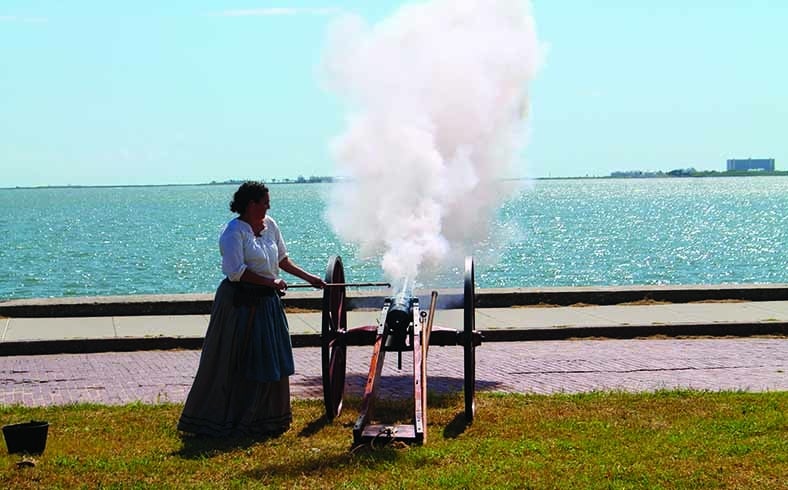
Jane was said to have been courted by many of the revolutionaries, including Travis, Austin, Ben Milam, Sam Houston and particularly, Mirabeau B. Lamar, who interviewed her many times for his writings. But she never remarried; perhaps her love for James Long was too great.
In addition to operating her hotel, Jane owned and ran a plantation as one of the “Old Three Hundred” families in Stephen F. Austin’s original grant. She became an honorary member of the Texas Veterans Association (Republic of Texas) and is revered as a “conspirator and revolutionary” in Texas’ War for Independence. It is from her incredible bravery during her period on Bolivar Peninsula that she became known as the “Mother of Texas.”
* * *
Bolivar Peninsula residents were already building a tradition of honoring Jane Long when, in 2008, Hurricane Ike’s 20-foot storm surges swept vast sections—businesses, homes and all—into East Bay.
Afterwards, during the recovery period that is still in progress, the annual Jane Long Festival took on a new, deeper significance. Jane became even more of a symbol of strength, bravery and determination to overcome adversity.
Now Bolivar residents have an even greater impetus to their original goal of putting the “Mother of Texas” into a much bigger spotlight. Already members of the Jane Long Society have:
- Had Texas State Highway 87—which runs the length of the Bolivar Peninsula from the Bolivar Ferry Landing to High Island—officially renamed the Jane Long Highway.
- Presented a portrait of Jane Long to the State Capital in Austin where it now hangs with other distinguished Texans.
- Helped institute extensive improvements at historic Fort Travis, which now includes a historical Jane Long Pavilion—with its three distinctive flags—the U.S. Flag, the Texas State Flag and the famous Jane Long Red (petticoat) Flag—that (it’s said) she used to trick the Karankawa Indians into thinking the fort was still armed with soldiers!
The success of six previous Jane Long Festivals triggered an expansion to two days in 2016. This family-oriented celebration is held the third Saturday in October at arguably one of the most beautiful festival sites in the State of Texas, Fort Travis Seashore Park. This site of Fort Travis on Bolivar’s point has historically served American defenses from the earliest days through both World Wars.
The total area, just east of the free Bolivar-Galveston ferry landing, is an incredibly picturesque festival location, with sweeping views of the Bolivar Lighthouse, Gulf of Mexico, Galveston Bay, Galveston Island, and huge freighters heading to and from the Houston Ship Channel.
The “Galveston Roads”—as that section is colloquially called—are home to frequently sighted dolphins, Galveston’s famous brown pelicans and numerous other shore birds as well as cruise ships, shrimping and other fishing and recreational boats.
Featured at the annual Jane Long Festival are well-known pioneer and military re-enactors whose authentic campsites and cannon firings are always popular with adults and children alike as are the wide assortment of foods, games, booths and vendors.
Highlighting the continuous stage entertainment are always uniquely-changing family-oriented plays designed to delight as well as educate about Jane Long.
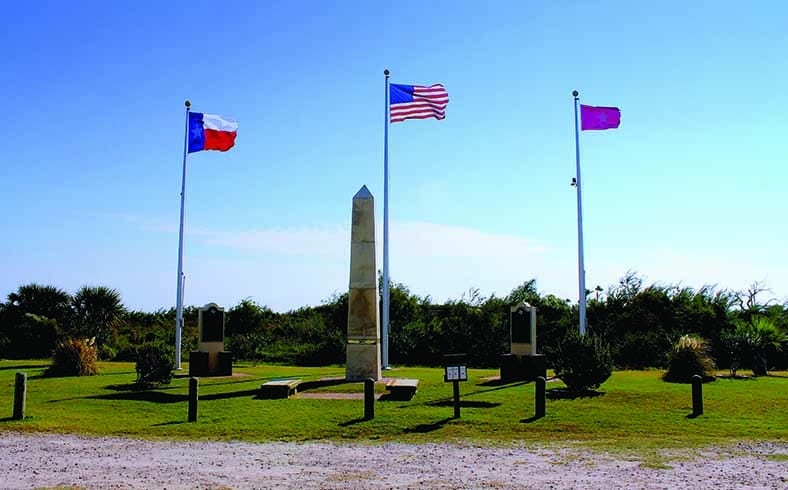
FORT TRAVIS was the first fort officially established by the Republic of Texas. Originally sited on Galveston Island and named Fort Point, it was relocated to Bolivar Peninsula, renamed Fort Travis (for Alamo Commander William Barrett Travis) near the site of the now long-gone earthworks built by Dr. James Long and his wife Jane Long.
The first known actual fort on that site was an earthen levee constructed by the Spanish explorer Frances Xavier Mina in 1816. Mexican rebels had utilized the site, only a few years before Jane arrived in 1821. Later it became a Civil War fortification.
The present Fort Travis was built in 1898. U.S. Troops in both World War I and World War II occupied it. Defended by four batteries, its firepower ranged from two 12-inch guns mounted on barbette carriages to three-inch rapid-fire guns.
After the Galveston hurricane of 1900, a 17-foot seawall was constructed on Bolivar Peninsula’s Gulf side of the fort. German prisoners of war were interned here during World War II. The former batteries were then made available to the public during hurricane emergencies. In 1960 the fort was designated an official civil defense shelter.
The Jane Long Pavilion is sited in front of the fort on the Jane Long Highway (SH 87). It is very much a tribute to those who have worked so hard to rebuild Bolivar Peninsula after the devastation of Hurricane Ike.
Jane Long Society’s mission is to keep that spirit of survival alive and bring attention to Fort Travis which itself suffered severe Ike damage to the historic bunkers and other fortifications. The Society is a subcommittee of the Bolivar Peninsula Historical Foundation.
Details on the annual Jane Long festival and associated activities can be found on society’s website: janelongfestival.org.
Photos Courtesy of Tom Olsen, Claudia Perkins and Jane Long Society Members
